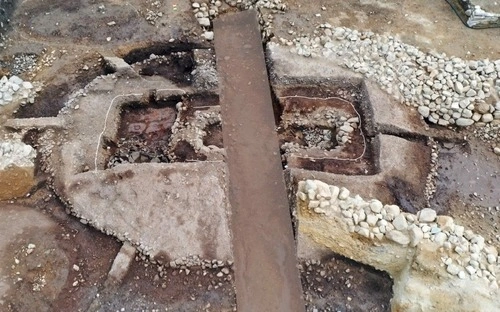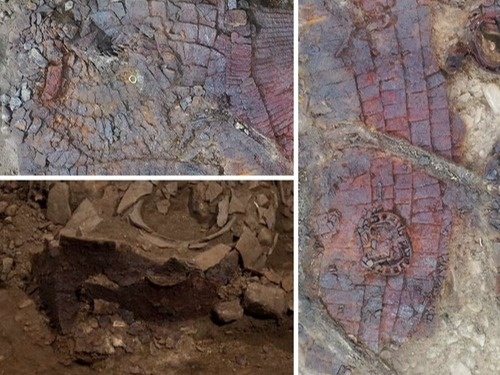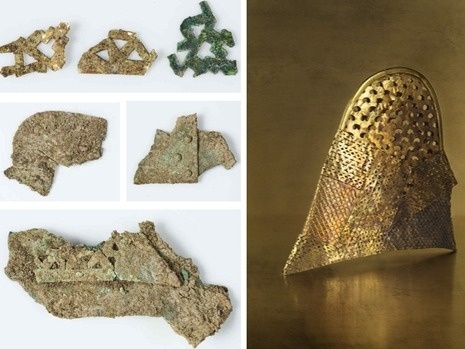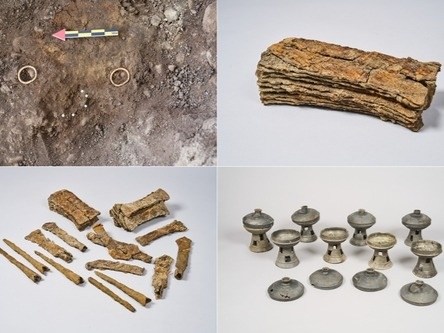South Korea unearths 1,600-year-old tomb believed to be of Silla general
Archaeologists have unearthed a lavish tomb believed to belong to a Silla-era general dating back 1,600 years, the national heritage agency said Monday, Yonhap reports.

The tomb, thought to have been built for a high-ranking general who died around age 30, was discovered at the royal tomb complex in Gyeongju, the capital of the Silla Kingdom (57 B.C.–A.D. 935).
The find includes a rare, complete set of armor for both a warrior and his horse, shedding new light on the ancient Korean kingdom's military might.
"Considering the excavated artifacts and burial practices, we presume this is the tomb of a Silla general of the highest status who also performed a political role," the Korea Heritage Service (KHS) said in a press release. The excavation was conducted jointly with the Silla Cultural Heritage Research Institute.
Based on the developmental stages of Silla tombs and the artifacts unearthed, researchers believe the tomb was constructed in the late 4th or early 5th century.
The centerpiece of the find is only the second complete set of horse armor ever discovered in a Silla tomb, accompanied by a full suit of human armor, a helmet, a saddle, a bit and stirrups.
Academics expect it to be tangible evidence of Silla's elite, heavily armored cavalry units that were crucial to the kingdom's power.
"This is significant data that shows the true nature of the cataphracts, as well as Silla's powerful military strength and the prestige of its ruling class around the 5th century," the agency said.

The human armor stands out for its advanced design, combining leather with iron plates to create a lighter, high-performance suit, suggesting the owner commanded access to the finest military technology of the time.
Archaeologists also found the remains of a human sacrifice, likely an attendant, buried alongside the general.
Also among the 165 artifacts unearthed were a pair of gold earrings, believed to have been worn by the deceased, a large ring-pommel sword, fragments of teeth and gilt-bronze plates.
However, the absence of more lavish accessories, such as necklaces or belt decorations, suggests the tomb's occupant was primarily a military figure rather than a ceremonial one.

Analysis of the tooth fragments indicates the tomb's occupant was about 30 years old, officials said.
Fragments of gilt-bronze plates appear to be from a gilt-bronze headpiece crown featuring openwork triangular and convex patterns similar to those found in ornaments from Korea's ancient Goguryeo Kingdom (37 B.C.–A.D. 668) known to be discovered in Jian, China, as well as in a gilt-bronze headpiece crown unearthed in another Silla tomb, according to the agency. Experts believe it to be one of the earliest known examples of a Silla gilt-bronze crown, offering rare insight into early gold craftsmanship.

The latest discovery was made near the previously excavated Hwangnam-dong Tomb No. 120 in the Daereungwon Tomb Complex in Gyeongju. The tomb was first identified during the Japanese colonial period (1910–45), but the site was later damaged when private homes were built over it and it eventually faded from memory.
Since 2018, the KHS and the city of Gyeongju have resumed excavations in the area, identifying two mounds -- Tombs No. 120-1 and 120-2 -- and uncovering a range of valuable relics.
The newly discovered site, named Hwangnam-dong Wooden Chamber Tomb No. 1, along with select artifacts, will be open to the public from Oct. 27 to Nov. 1 to coincide with the Asia-Pacific Economic Cooperation meetings in Gyeongju.
Earlier, South Korea’s exports of cosmetics products hit fresh high through September 2025.
